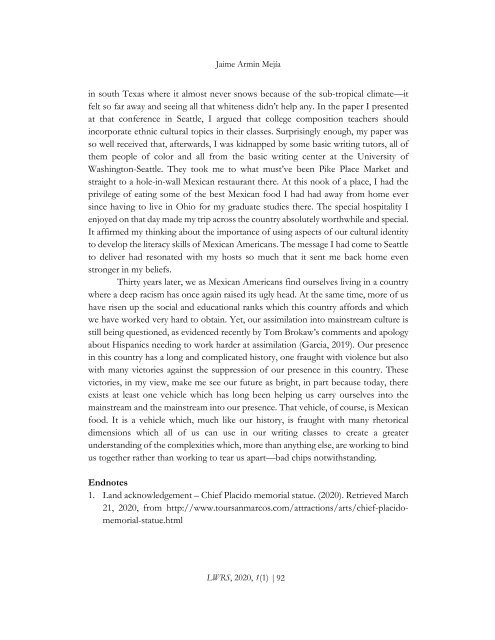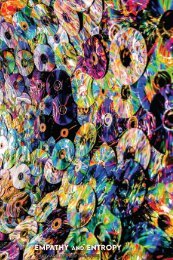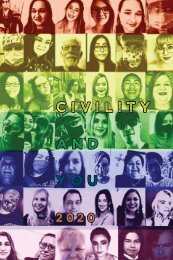LWRS June 2020 Volume 1, Issue 1
Inaugural Issue co-edited by Yndalecio Isaac Hinojosa and Isabel Baca
Inaugural Issue co-edited by Yndalecio Isaac Hinojosa and Isabel Baca
Create successful ePaper yourself
Turn your PDF publications into a flip-book with our unique Google optimized e-Paper software.
Jaime Armin Mejía<br />
in south Texas where it almost never snows because of the sub-tropical climate—it<br />
felt so far away and seeing all that whiteness didn’t help any. In the paper I presented<br />
at that conference in Seattle, I argued that college composition teachers should<br />
incorporate ethnic cultural topics in their classes. Surprisingly enough, my paper was<br />
so well received that, afterwards, I was kidnapped by some basic writing tutors, all of<br />
them people of color and all from the basic writing center at the University of<br />
Washington-Seattle. They took me to what must’ve been Pike Place Market and<br />
straight to a hole-in-wall Mexican restaurant there. At this nook of a place, I had the<br />
privilege of eating some of the best Mexican food I had had away from home ever<br />
since having to live in Ohio for my graduate studies there. The special hospitality I<br />
enjoyed on that day made my trip across the country absolutely worthwhile and special.<br />
It affirmed my thinking about the importance of using aspects of our cultural identity<br />
to develop the literacy skills of Mexican Americans. The message I had come to Seattle<br />
to deliver had resonated with my hosts so much that it sent me back home even<br />
stronger in my beliefs.<br />
Thirty years later, we as Mexican Americans find ourselves living in a country<br />
where a deep racism has once again raised its ugly head. At the same time, more of us<br />
have risen up the social and educational ranks which this country affords and which<br />
we have worked very hard to obtain. Yet, our assimilation into mainstream culture is<br />
still being questioned, as evidenced recently by Tom Brokaw’s comments and apology<br />
about Hispanics needing to work harder at assimilation (Garcia, 2019). Our presence<br />
in this country has a long and complicated history, one fraught with violence but also<br />
with many victories against the suppression of our presence in this country. These<br />
victories, in my view, make me see our future as bright, in part because today, there<br />
exists at least one vehicle which has long been helping us carry ourselves into the<br />
mainstream and the mainstream into our presence. That vehicle, of course, is Mexican<br />
food. It is a vehicle which, much like our history, is fraught with many rhetorical<br />
dimensions which all of us can use in our writing classes to create a greater<br />
understanding of the complexities which, more than anything else, are working to bind<br />
us together rather than working to tear us apart—bad chips notwithstanding.<br />
Endnotes<br />
1. Land acknowledgement – Chief Placido memorial statue. (<strong>2020</strong>). Retrieved March<br />
21, <strong>2020</strong>, from http://www.toursanmarcos.com/attractions/arts/chief-placidomemorial-statue.html<br />
<strong>LWRS</strong>, <strong>2020</strong>, 1(1) | 92





